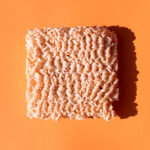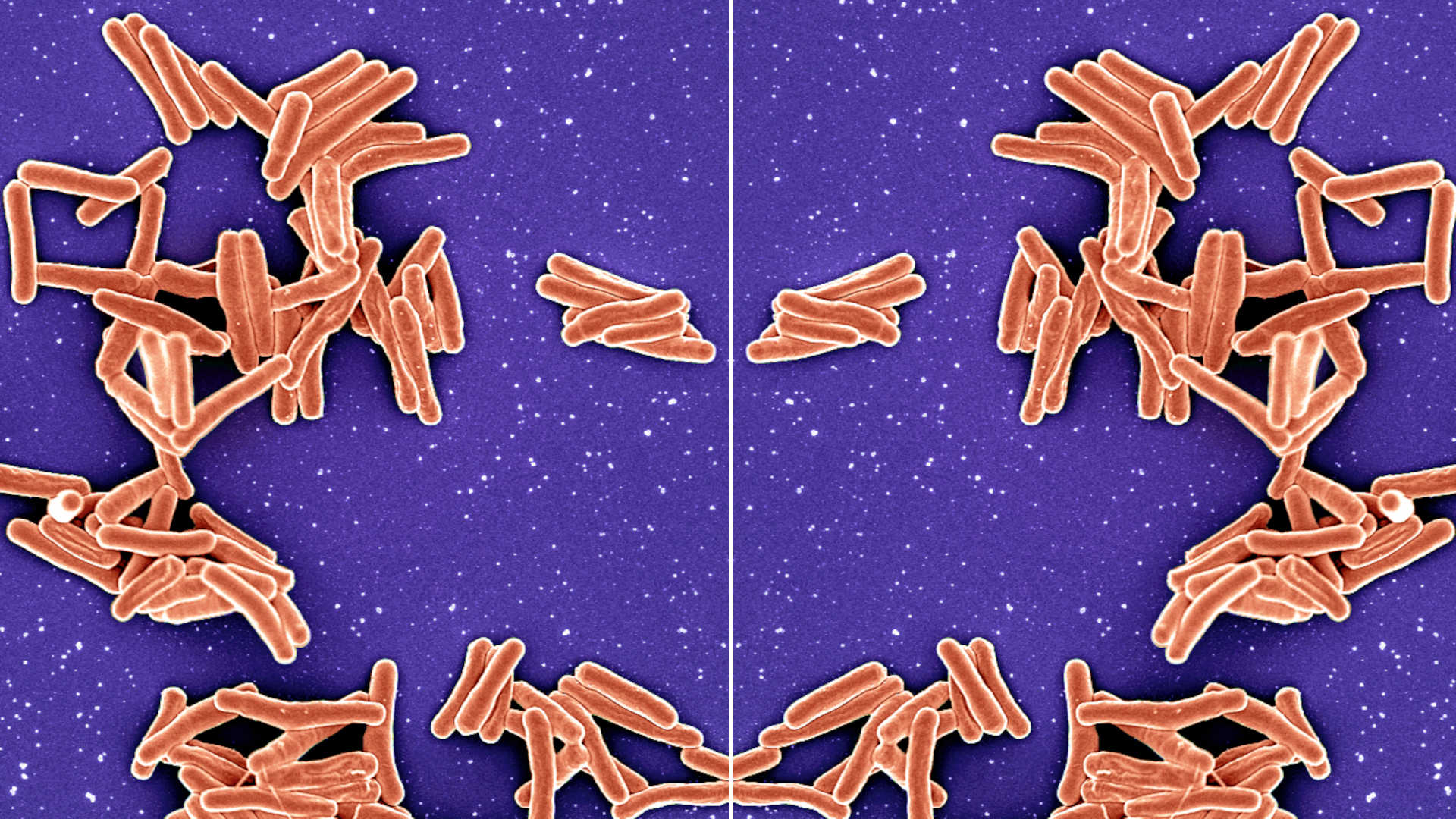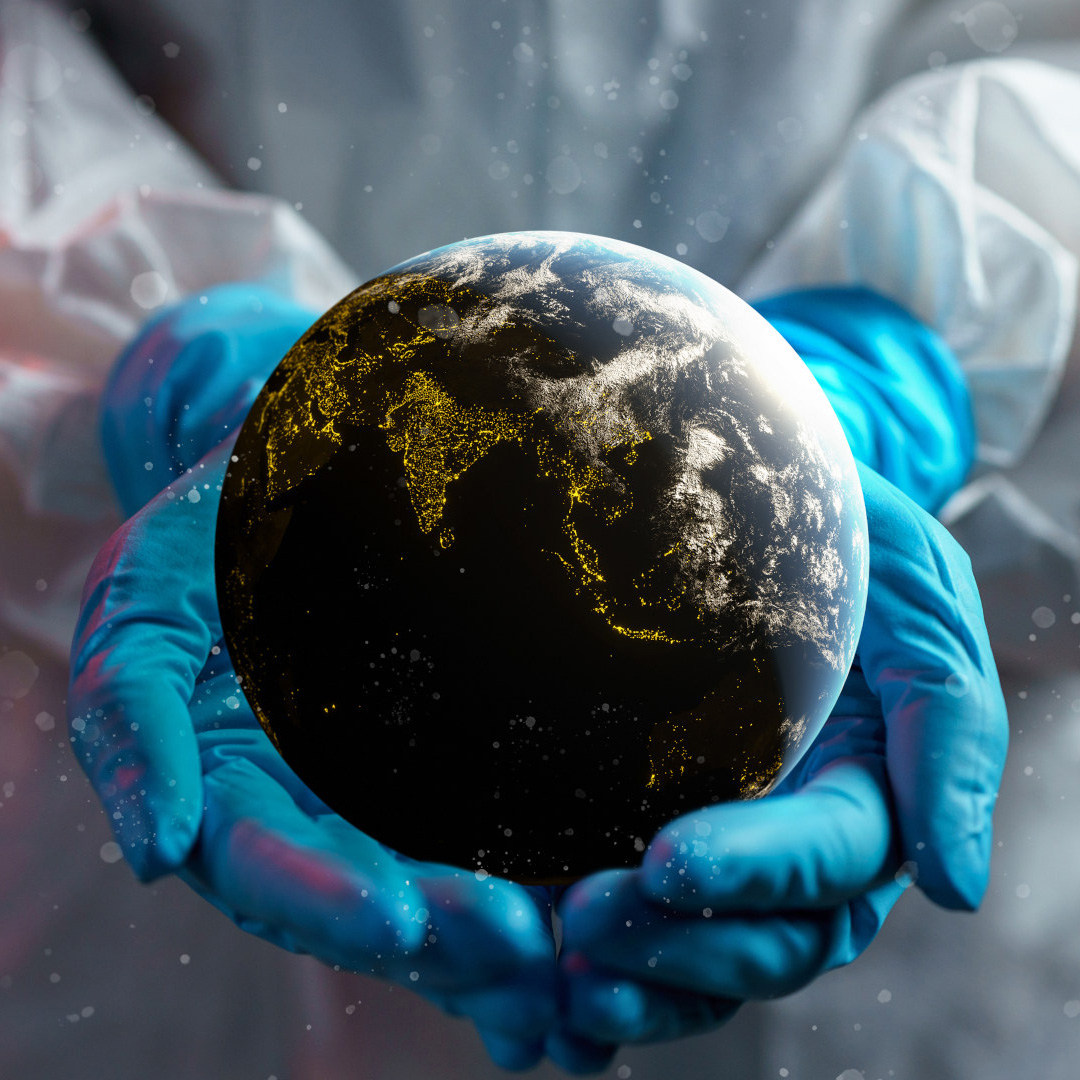Consider your hands. They are essentially identical in every respect bar one: They are mirror images of each other.
Many of the molecules of life, such as proteins and DNA, have the same property. They can exist in right- and left-handed forms that are otherwise chemically identical. However, due to a quirk we don’t fully understand, life evolved to use one set of molecules almost exclusively: Everything from the simplest bacteria and fungi to the most complex plants and animals uses left-handed proteins and right-handed DNA.
For over 30 years, I’ve been fascinated by the idea that “mirror” biological molecules — like right-handed proteins (or their miniature versions, peptides) — could be used as stealthy drugs for diseases lacking effective or practical treatments. In a breakthrough published during my first year of graduate school, Stephen Kent and co-authors demonstrated that proteases (digestive enzymes in the body) cannot break down mirror peptides — ones with the opposite handedness to the peptides your body produces naturally. Building on this principle, my lab has been creating mirror peptides that could help prevent or treat infectious diseases. These peptides last much longer in the body because they are not digested and also not recognized (or cleared) by the immune system.
Last spring, I was at a meeting of the Pandemic Antiviral Discovery initiative, which aims to help accelerate the development of medicines to prepare for the next viral pandemic. My lab has been looking at possible mirror peptide treatments for the Nipah and Hendra viruses — two closely related, highly lethal viruses that could cause deadly pandemics. A dinner discussion turned to the idea of engineering an entire mirror bacterium from scratch. Such an organism could be engineered to churn out larger versions of the kinds of molecules my lab builds at lower cost. But it would also present serious biosafety concerns. If mirror proteins are exciting as antivirals because they are largely invisible to digestive enzymes and the immune system, couldn’t that principle, scaled up, make a full mirror bacterium a uniquely dangerous pathogen?
For over 30 years, I’ve been fascinated by the idea that “mirror” biological molecules could be used as stealthy drugs for diseases lacking effective or practical treatments.
In December, 37 colleagues and I published a paper in Science arguing that mirror bacteria — self-replicating, synthetic cells whose every component exists in its mirror-image form — could indeed pose incredibly grave dangers if successfully created. First, they would likely evade most human, animal, and plant immune system responses because these have evolved to tackle natural bacterial threats, not mirrored ones. That intrinsic resistance could lead to widespread, lethal infections in many species (independent of any other factors that make pathogens dangerous, like toxins they can produce). Second, our world is not overrun with natural bacteria partly because they are kept in check by other organisms, such as viruses and amoebae, that prey on them. To the best of our current knowledge, reversed molecular structures would likely give mirror bacteria significant resistance to these predators, potentially enabling them to grow largely unchecked in a wide range of ecosystems.
We shouldn’t lose sleep, though. Nobody is currently close to creating a full mirror bacterium. No one has even achieved the much simpler feat of creating a natural bacterium from its individual components; doing so in mirror form would be an extraordinarily complex undertaking that could take decades. Our intention in publishing our paper was to kickstart the conversation about the potential risks long before they materialize.

But the idea of mirror bacteria raises an important question. We already know that mirror molecules are useful therapeutic agents with great potential for hard-to-treat diseases. We also now know that mirror bacteria could be incredibly dangerous, far outstripping any practical benefits they could provide. Where exactly should we draw the line?
Mirror bacteria and mirror molecules are a world apart. Mirror bacteria would be able to self-replicate: If they got into the wild, they could likely sustain and grow their populations on a range of simple foods that don’t have mirror-image forms (that is, foods that could be used equally well by natural and mirror life). What’s more, like any form of life, they could evolve to grow more efficiently on complex natural food sources as they spread. As we’ve seen from work like my co-author Richard Lenski’s long-term evolution experiment, bacterial populations can evolve very quickly.
Mirror molecules — chemically synthesized drugs — cannot replicate, and so cannot evolve. They do not present the dangers of mirror bacteria. And while mirror bacteria could be used to create mirror molecules, they’re not the only option. Indeed, there’s a central irony here: The more progress we make on the chemical synthesis technologies that could help enable the creation of a mirror cell, the easier it will be to synthesize mirror proteins directly, without the help of bacteria — decreasing the relative benefits of building mirror bacteria even further.
Nobody is currently close to creating a full mirror bacterium. Our intention in publishing our paper was to kickstart the conversation about the potential risks long before they materialize.
But the question gets thornier as we consider systems more complex than a peptide. The ribosome is the factory of your body’s cells, churning out proteins and enzymes. Building a mirror ribosome is a much more achievable goal that could be realized in the next decade. A mirror ribosome could efficiently produce mirror protein therapeutics without the risks associated with full, living, self-replicating mirror bacteria. But it will be important to evaluate if the mirror ribosome could also be an enabling technology on the road to self-replicating mirror cells.
We published our paper, and its accompanying technical report, to spark a global conversation that considers these questions — and many others. This year, some of my coauthors will be hosting events at the University of Manchester, Institut Pasteur, and the National University of Singapore to convene some of the necessary discussions, and we hope to be joined by the global scientific community, policymakers, and other critical stakeholders as we chart the best path forward.
We’re in the fortunate position that we have many years before the threat of mirror bacteria arises. As a global scientific community, I hope we use this window of opportunity to discuss these questions in detail in the months and years to come.
Michael Kay is a professor of biochemistry in the Spencer Fox Eccles School of Medicine at University of Utah.
Tom Freeman of Milltown Partners provided feedback on a draft of this article.











